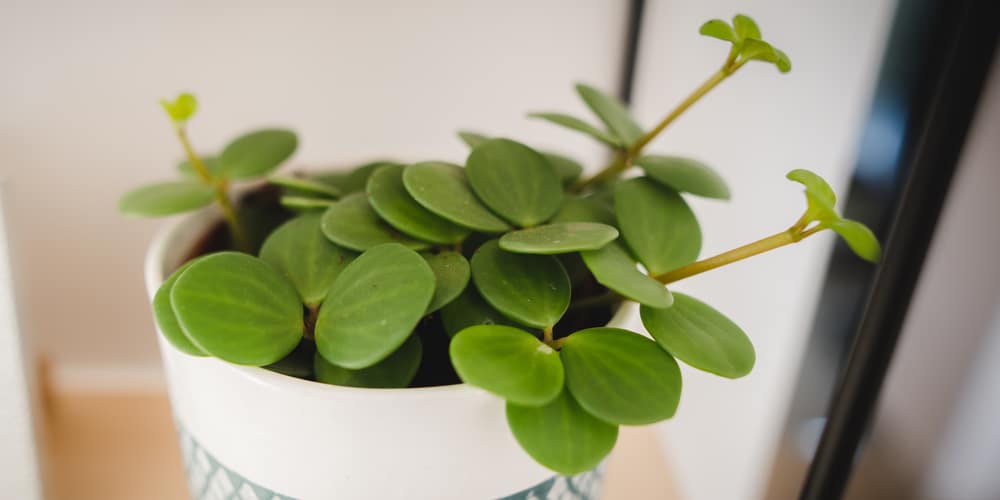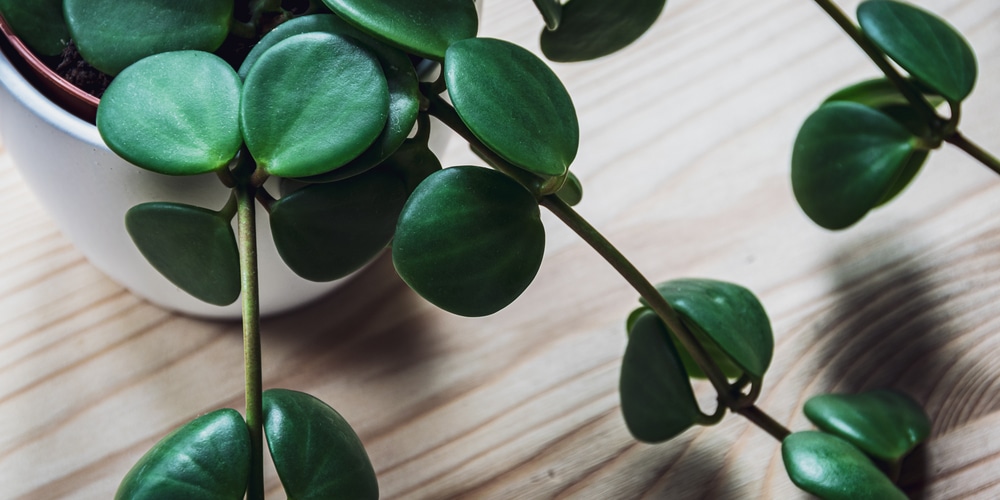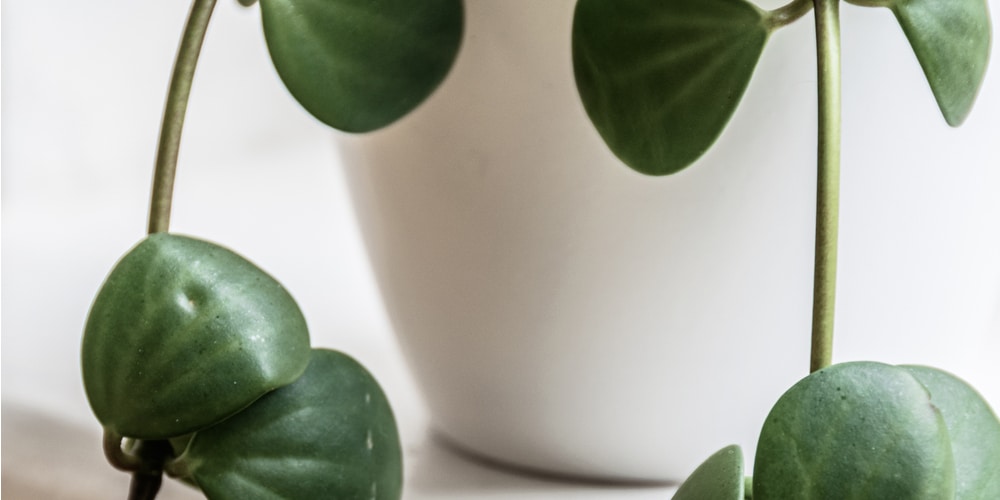The Peperomia Hope is a beautiful plant with trailing stems and small round leaves. It’s commonly referred to as acorn peperomia, four-leaved peperomia, and a radiator plant. These plants like warm, sunny areas and can be grown outdoors in USDA zones 9 to 12. In cooler climates, they can be kept as a house plant. Let’s look at how to grow, care and propagate a peperomia hope plant.
What is a peperomia hope plant?

Peperomia hope is a succulent plant with the scientific name Peperomia tetraphylla. It has small round leaves that grow on trailing stems. The leaves are dark green with lighter veins. These plants look great growing in a hanging basket or trailing over the edge of a windowsill or shelf.
These plants are a hybrid variety that has been created from the Peperomia deppeana and Peperomia quadrifolia plants. The peperomia hope is an evergreen perennial that’s part of the Piperaceae family. This is the same botanical family as pepper plants are part of.
As your peperomia hope grows, it can form long vines, so it’s good to prune off any extra growth every year or two if you want to keep your plant looking more compact. The plant is an epiphyte and requires nutrients from air and water to survive.
Hope plants can flower annually on spikes. The flowers are non-showy, and houseplants are unlikely to produce plants.
How to care for a Peperomia Hope plant

Peperomia hope is a small, low-light house plant. It grows well in many types of soil and prefers moist soil.
Hope plants are popular because they have shiny leaves and unusual patterns on their leaves that add visual interest to the home. They are succulents that don’t need a lot of light or water, making them an easy plant to care for. Here are some tips to help you grow a thriving Peperomia Hope plant:
Sunlight Needs
Peperomia hope plants grow best in indirect light. For example, if you live in California, it is best to move the plant away from any windows that receive full or strong sun exposure, or sunburn may occur. If you live in a hot region with bright sunlight during most hours of the day, the peperomia hope may be moved to a shadier location.
Watering Requirements
Peperomia hope plants are very drought tolerant. They do need regular watering but will survive for some time without any water at all once they are established in their growing medium with proper drainage.
However, like most houseplants, it is good practice to keep them watered regularly. But be careful not to overwater your plant. To avoid root rot, make sure there is plenty of drainage by using a pot with drainage holes and using well-draining soil. Waiting until the soil has completely dried out before you water your hope plant again.
Fertilization
Peperomia hope also do not need much fertilizer as they are fast-growing plants that tend to grow quickly in most cases without any added help. Feeding your houseplants once a month using an organic fertilizer can be beneficial.
Soil
Your hope plant will need to be planted in soil that contains organic matter, such as coconut coir, peat moss, composted leaves, or sphagnum moss. You may like to mix your own soil or use a soil pre mix that has been designed specifically for cacti and succulents.
Temperature
The ideal temperature for these plants is around 70 degrees Fahrenheit. They can be kept in temperatures of 64 to 78F. If the temperatures drop below 55F during the winter and your plant is left outside, it will likely die. Ensure you keep your plant away from any heating or cooling vents, as they tend to burn easily if you place them near hot or cold surfaces.
Humidity
Hope plants like humidity of around 50% and may need to be misted every now and again depending on the humidity in your home. If you live somewhere dry like Arizona, you may like to use a pebble and water tray to help improve moisture. Alternatively, invest in a humidifier or move your plant into the kitchen or bathroom where the humidity is higher.
Peperomia hope propagation

There are two ways to propagate your peperomia hope plant using a stem cutting and either soil or water. Before taking a cutting from your peperomia hope plant, ensure that it’s healthy and has reached maturity. Choose a healthy stem to take a cutting from, then follow these simple steps.
Water method
- Use a pair of sterile scissors to take a few cutting from your plant. Take a cutting that’s at least 5 inches long.
- Remove the bottom leaves from the cutting. Leave three or four leaves on the stem.
- Place the end of the stem in a glass of water and then cover with a plastic bag to keep your plant warm and humid.
- Care for your plant in water for a few weeks until the roots have grown.
- Plant your cutting in a well-draining soil and then care for your plant as you would any other peperomia hope plant.
Soil Method
- Use a pair of sterile scissors to take a few cutting from your plant. Take a cutting that’s at least 5 inches long.
- Remove the bottom leaves from the cutting. Leave three or four leaves on the stem.
- Leave your cutting for a few days so that it callouses over.
- Lay your cutting on top of the ground and keep an eye on it to see whether it’s starting to produce roots. Once you can see small white roots growing out of the bottom, root hormone powder may be applied to encourage even more growth.
- Then plant the cutting in any type of organic matter such as peat moss, coconut coir, or perlite. Be sure to keep the root moist until it starts growing on its own. The most important thing about propagating these plants is that you need to keep the soil wet until you can see new growth coming out of it.
Conclusion
You can grow peperomia hope in soil with good drainage, in a container with at least one hole in the bottom of it, or even just by placing the pot directly into some rocks that allow for water to flow through.
Hope plants look great when placed next to any variety of other houseplants because they are very attractive. If you live somewhere warm like Florida or Hawaii, this plant can be outside all year long, but during hot summer months, it is best to bring your plants inside, so they do not get burned. Watering your plants once every couple weeks should suffice unless rainfall is infrequent.
Related: Peperomia Rana Verde, String of Turtles